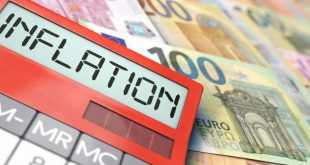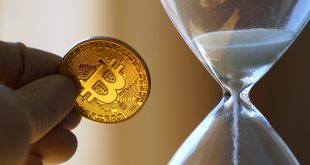Rates may need to increase significantly, according to the February Fed minutes.
Despite a holiday-shortened business week, there will still be plenty of market-moving information available. On Wednesday, the FOMC minutes will be made public, and on Friday, PCE inflation data and the University of Michigan Inflation Forecasts will be issued. In terms of what the Fed is looking for when stopping its rate-hiking cycle, the minutes will probably give some flavour. They probably want to see a distinct trend in inflation readings from month to month that suggests the Fed is keeping the economy growing at a 2% rate.
PCE is anticipated to increase 0.5% from month to month, up from 0.1% in December, and 5% from year to year, remaining constant from December. It would appear that the 3-month annualized trend for PCE increased to 3.35% (Nov., Dec., Jan.) from an annualized 0.9% if the month-over-month number is as predicted (Oct., Dec., Jan.). In addition, it has increased from 2.1% annualized during the same period to 3.3% annualized from July to January.
Therefore, as you can see, although being significantly lower than where they had been, the 3-month and 6-month year-over-year increases are still significantly higher than the Fed’s objective for headline PCE of 2% and exhibit a considerable acceleration from the preceding running trend. One data point won’t cause the Fed to worry, but a strong one in February would. Thus, if January pans out as projected, it probably suggests that the Fed is moving farther away from its objective.
Investors were undoubtedly uneasy after this week’s CPI and PPI, which even led experts to raise their PCE projections. The Fed Fund Futures have consequently been repriced and are currently trading more than 80 basis points higher than they were on February 2, the day before the release of the January jobs data. The highest terminal rate is now estimated to rise from around 4.85% to 5.3% in August.
Higher nominal rates have been the outcome, with the 10-year going up to and encountering resistance at 3.9%. A bull pennant pattern looks to have also been broken, as the RSI crossed over two downtrends. This probably indicates that the 10-year general momentum has changed to higher rates.
Furthermore, if the 10-year rises above 3.9%, it will probably signal a double bottom and may lead to a retest of the highs above 4.25%.
The dollar index has also broken out, rising from a falling wedge. I think the dollar can move back to the 105.80 area.
More importantly, the S&P 500 appears to be completing a bump-and-run pattern. The first uptrend of the bump-and-run pattern has been completed, and now the S&P 500 is likely to continue to drift lower toward the lower trend line, around 3,950.
 Noor Trends News, Technical Analysis, Educational Tools and Recommendations
Noor Trends News, Technical Analysis, Educational Tools and Recommendations





